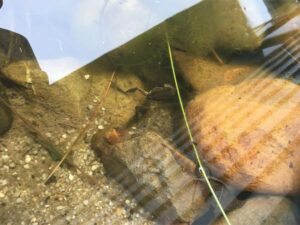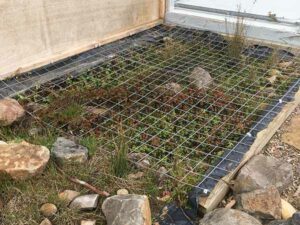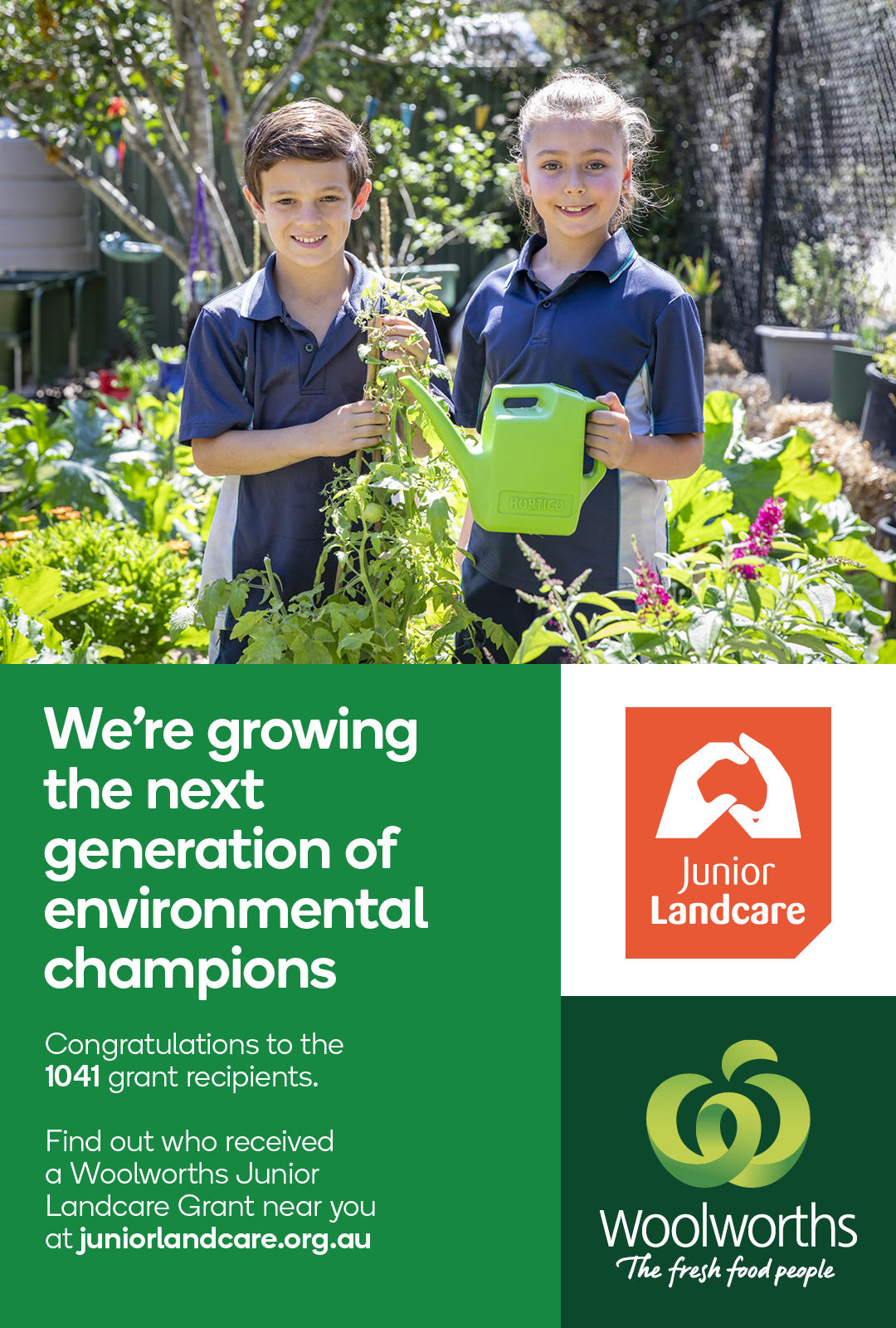CASE STUDY

Age Groups: 7-13
Grant Name:
School: Newham Primary School
Grant Sponsor:
Project Overview:
With just 140 students and eight staff, Newham Primary School in Victoria is achieving great results with its environmental and sustainability programs, including designing and building a wetland to provide an alternative breeding ground for frogs.
Winner of the 2021 Woolworths Junior Landcare Team Award, the school was prompted to take action when dead frogs had been found on the school’s sloping soccer oval, some distance from the adjoining tributary of Deep Creek. “This was likely due to a bog being created at the bottom end during the wetter months, providing habitat for frogs. As the area dried out, frogs were dying. The solution was to build a permanent frog bog which wouldn’t dry out,” explained Libby Fullard, Classroom & Sustainability Teacher at Newham Primary School.
Environmental Outcomes:
Apart from the Southern Brown Tree frogs sighted on completion of the project, calls of the eastern common froglet and possibly Bibron’s toadlet or the southern toadlet have been heard over the past few years. Tadpoles and numerous water bugs have also been spotted.
The frog bog surrounds, with rushes and grasses, have also created habitat for common garden skinks, and has been visited by a copperhead snake and an echidna.
Educational Outcomes:
The frog bog project has given students the opportunity to engage in a hands-on way with creating a solution to an environmental issue, and learning about frogs found in the Newham area.
Students were involved in all stages of the project, including generating designs based on their learnt knowledge of frog habitat requirements; varying depth levels, rocks, places to hide and plants to encourage breeding.
A group of students were also involved in the construction of the frog bog allowing them to learn a range of skills. They trimmed the plastic lining, transported and dug in rocks, laid paving rocks to create a ‘viewing platform’ and added protective mesh. The students also planted the area with native rushes, sedges and shrubs.
Local Landcare members were also involved in the project, strengthening students’ connection to community.
Conclusion:
Based on the success of their project, the school suggests the following tips for those wanting to create frog habitat of their own:
- When placing and designing the frog bog, ensure there is enough shade so the frog bog water doesn’t heat up too much or dry out over the hotter months of the year.
- Invite Traditional Owners to share cultural knowledge and/or perform a ceremony for opening or naming your frog bog.
- Create informative signage at your frog bog to increase students’ engagement and understanding of frog life cycles and frog species.
- Link in with local Landcare groups or other experts to create community connection.


 Teachers & Educators
Teachers & Educators Youth or Community Groups
Youth or Community Groups